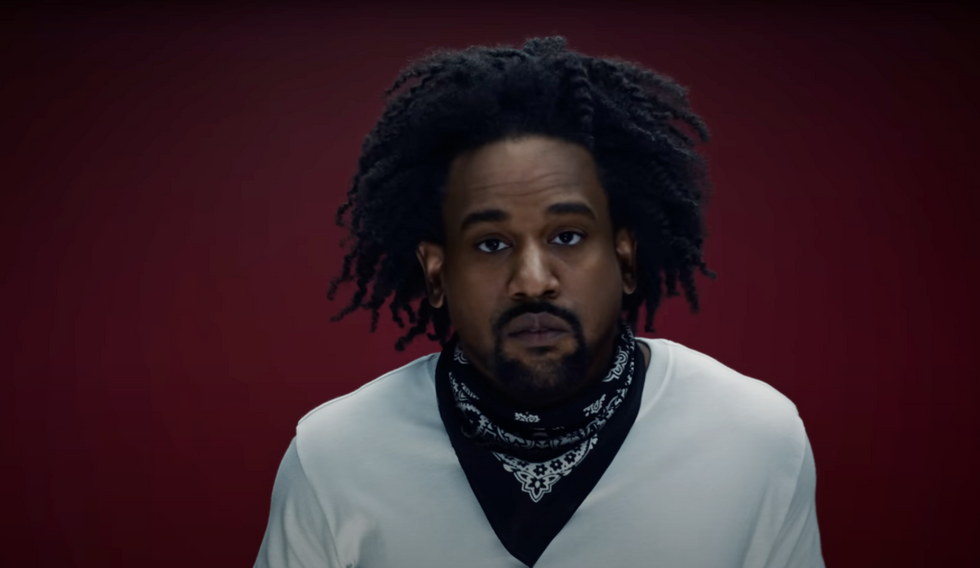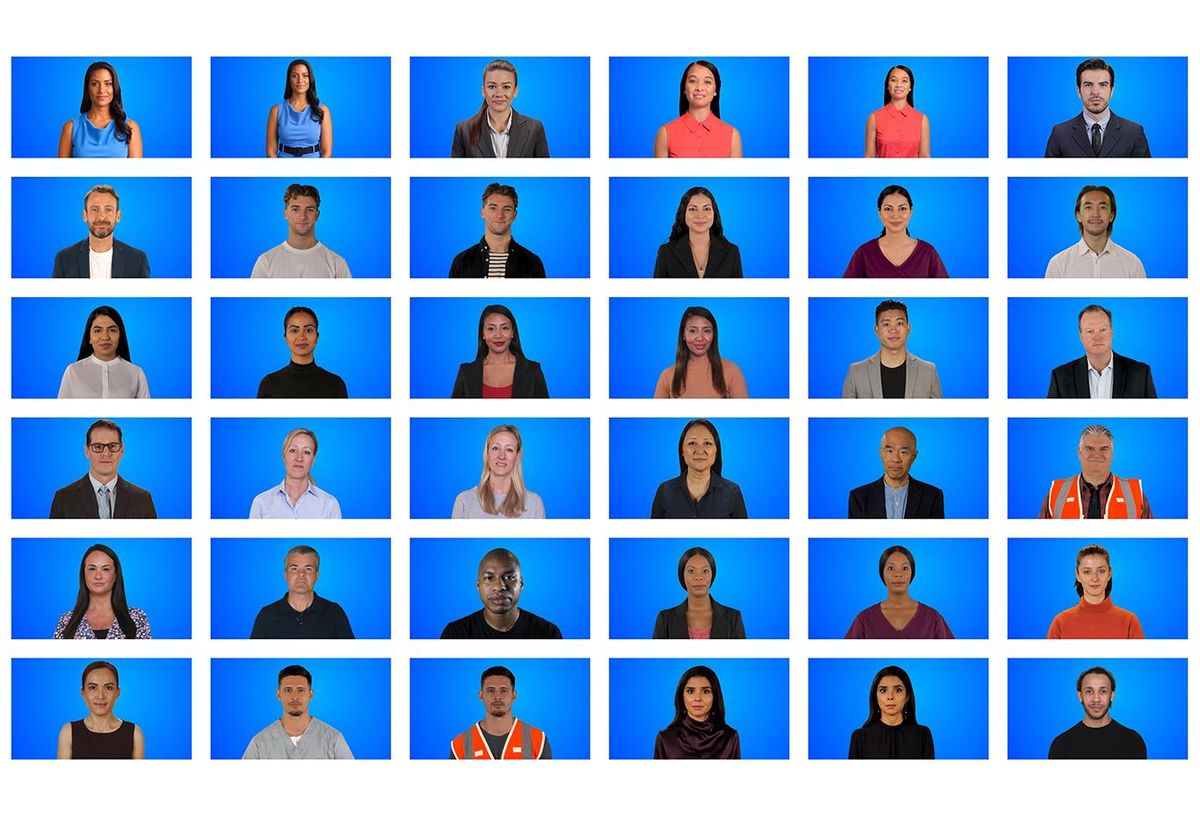In December, as many people prepared to take off for a winter vacation, the creators of “South Park” announced US $20 million dollars of new funding for the duo’s deepfake studio, Deep Voodoo. The company’s press release says the funds will help it offer “unrivaled face-swapping visual effects to artists, producers, and creators around the world.”
Deep Voodoo’s Hollywood connections make it particularly alluring, but it’s far from alone. Dozens of startups now offer services based on deepfake technology. The largest of these, London-based Synthesia, raised $50 million in 2021 and employs over 100. And this is likely just the start of the trend.
“I think it’s fair to say that as technology gets better and more widely available, more and more people are starting to see the potential in deepfakes. […] The only thing that might slow this growth down is the lack of clear regulations and guidelines for how deepfakes should be used,” says Dmitry Shironosov, CEO of Everypixel Labs.
What are deepfake companies doing, anyway?
Deepfakes have entered popular culture primarily through viral videos. Unreal Keanu Reeves, a popular YouTube Shorts creator, has racked up tens of millions of views in just a few months. A similar TikTok account, deeptomcruise (which is produced by an AI company called Metaphysic.ai), has over five million followers. It’s a clever trick—but how do fake videos of Keanu Reeves dancing in his kitchen translate to startups raising millions?
“Let’s face it, getting people’s attention is key for anyone in the business, media, or even government, and deepfakes can certainly help with that,” says Dmitry Shironosov, CEO of Everypixel Labs.
The relation can be direct. Deep Voodoo brought deepfake technology to the music video for Kendrick Lamar’s “The Heart Part 5.” The rapper’s face gradually transforms in a blink: He becomes Kanye West one moment, Will Smith the next. Digital manipulation of an actor (or, in this case, a musician’s) face isn’t new. But deepfakes are more flexible, and less time-intensive, than similar techniques, which contributes to their success on social media. Star Trek’s digital resurrection of Spock, though arguably more convincing than Deep Voodoo’s results, required hours of preparation, applying makeup and prosthetics in addition to complex digital effects.

Yet deepfakes are also creeping into less glamorous, more practical roles. “I believe that the entertainment and advertising industries will be particularly impacted by deepfake technology. It has the potential to completely revolutionize how we create and present content, making the process faster, and cheaper, and opening up new possibilities for creating more realistic and attention-grabbing special effects,” says Shironosov. “Let’s face it, getting people’s attention is key for anyone in the business, media, or even government, and deepfakes can certainly help with that.”
London-based Synthesia, founded in 2017, shows how this works in practice. The company offers over 85 “avatars” that can be used to create a video in over 120 languages. Users select an avatar, popin the video script they want it to follow, and let the AI handle the rest. The resulting video presentation isn’t going to sell tickets in theaters or put YouTube creators out of work, but it’s fine for training videos, informative presentations, and tutorials.
Other startups, like Maverick, are pitching deepfakes for sending personalized videos at scale. Deepfakes could let marketers record a video once, then customize it to speak directly to a customer by name or highlight products in a way tailored to the recipient. If you fail to finish checking out on a retail website you frequently visit, it could nudge you with an automatically generated video that references the specific item left in your cart.
Is it time to stop worrying and love the deepfake?
Deepfakes have existed in the wild for several years, and worries about how they might contribute to misinformation have followed. The viral nature of the earliest deepfake clips, which used political figures like Barack Obama and Donald Trump as examples, seemed to highlight these concerns. Yet these worries haven’t proven a hurdle for startups in the space, and the companies that are in some way using technology that might be called a “deepfake” are too numerous to count.
“I think it’s fair to say that people’s perceptions of technology have really evolved over time. At first, people might have been hesitant or even wary of it, especially regarding issues like security and privacy,” says Shironosov. Yet aside from China, which recently introduced rules requiring deepfakes be watermarked, the world’s governments haven’t taken regulatory action.
Synthesia’s avatars are derived from videos of real actors.Synthesia
Regulation, if it comes, may arrive too late, as the deepfake industry is evolving at a rapid pace and branching in numerous directions. The deepfake technique used by Deep Voodoo for Lamar’s music fills a much different role than Synthesia, which lets users create videos with nothing more than a script. And that, too, differs from companies like Maverick, which lets users customize portions of an existing video.
Shironosov thinks it may be time to ditch the term “deepfake” entirely as the capabilities of modern AI tools have outpaced the narrow set of capabilities the term originally described. “Honestly, we were even looking for something to replace the use of the term ‘deepfake’ in our work to establish the transition to the next level,” he says.
The future of deepfakes is still being written, but it seems to include a wide range of video manipulation tools that let editors improve, customize, and personalize every aspect of a video. And isn’t that, at some point, just video editing?
This article appears in the April 2023 print issue as “Deepfakes Are Now an Industry.”
- Facebook AI Launches Its Deepfake Detection Challenge ›
- What Are Deepfakes and How Are They Created? ›
- How Deepfakes Fuel Conspiracy Theories - IEEE Spectrum ›
Matthew S. Smith is a freelance consumer technology journalist with 17 years of experience and the former Lead Reviews Editor at Digital Trends. An IEEE Spectrum Contributing Editor, he covers consumer tech with a focus on display innovations, artificial intelligence, and augmented reality. A vintage computing enthusiast, Matthew covers retro computers and computer games on his YouTube channel, Computer Gaming Yesterday.



